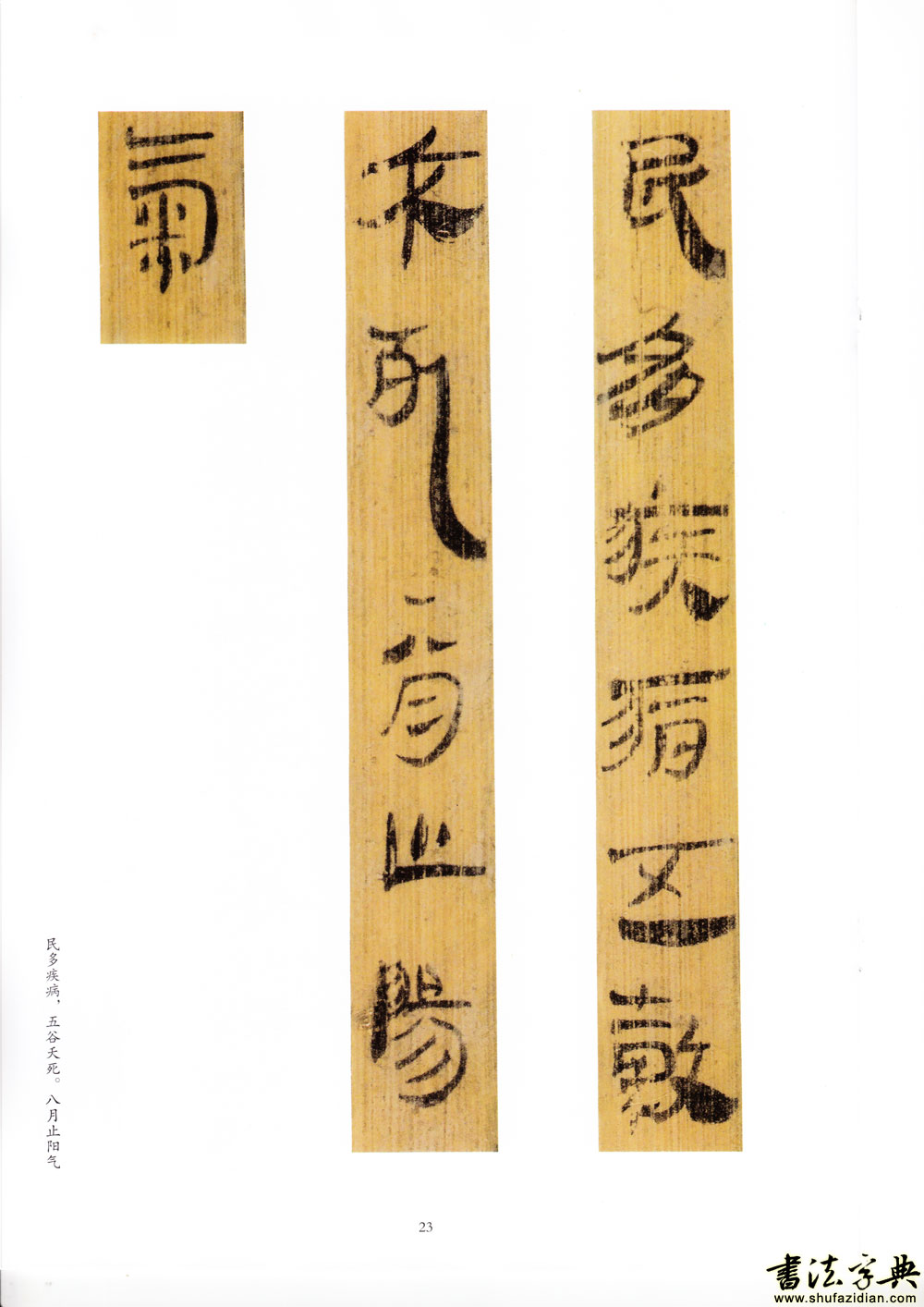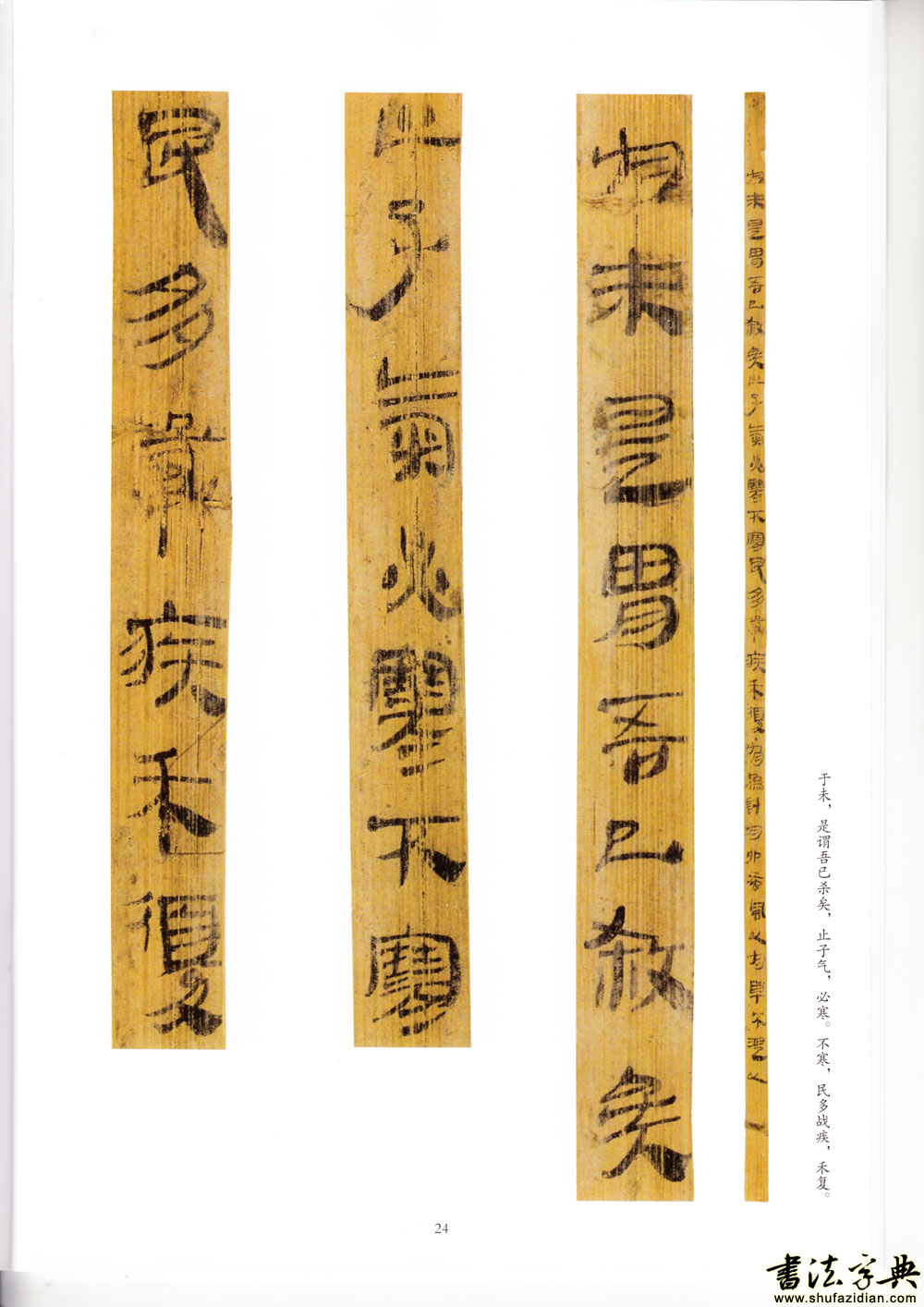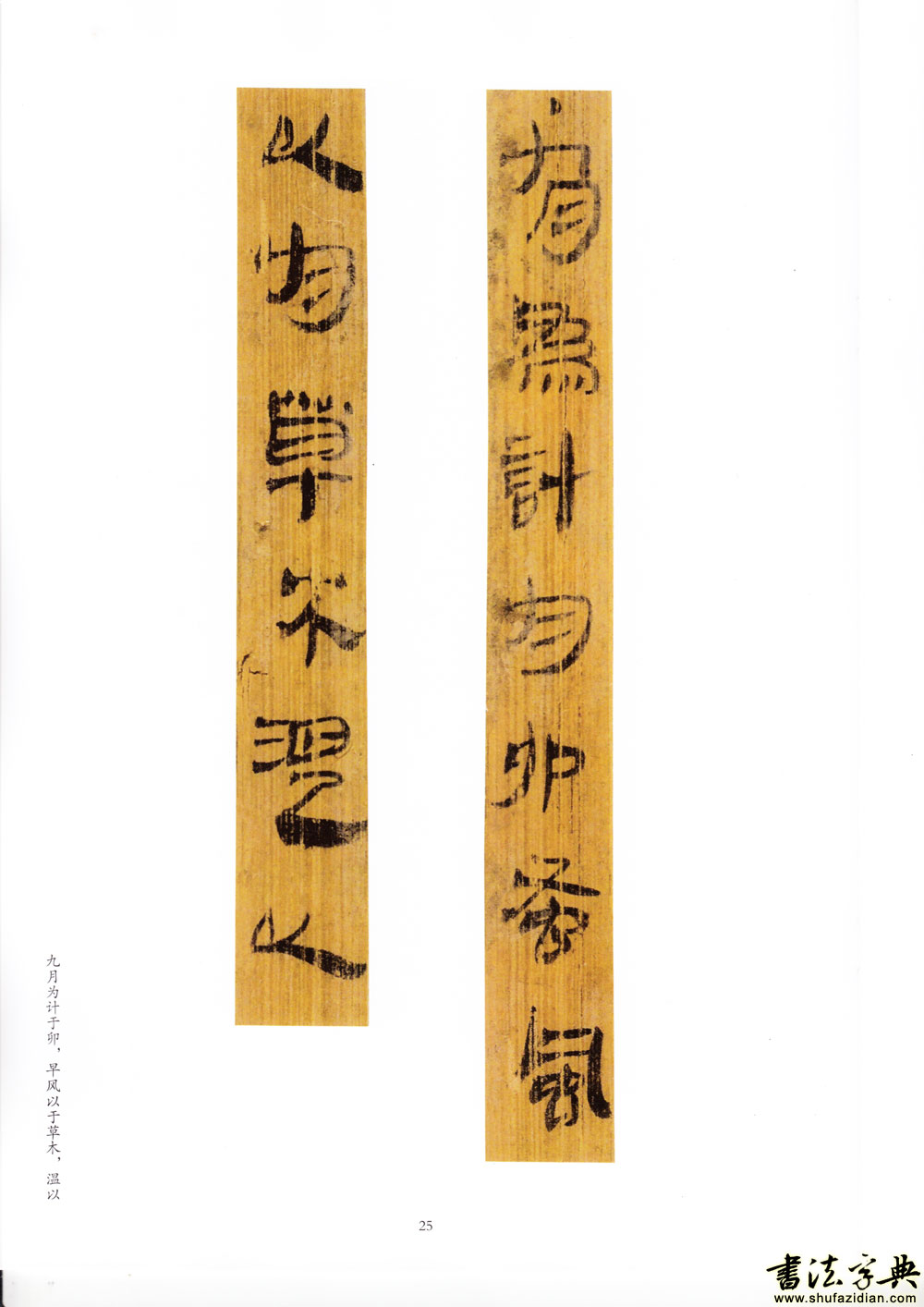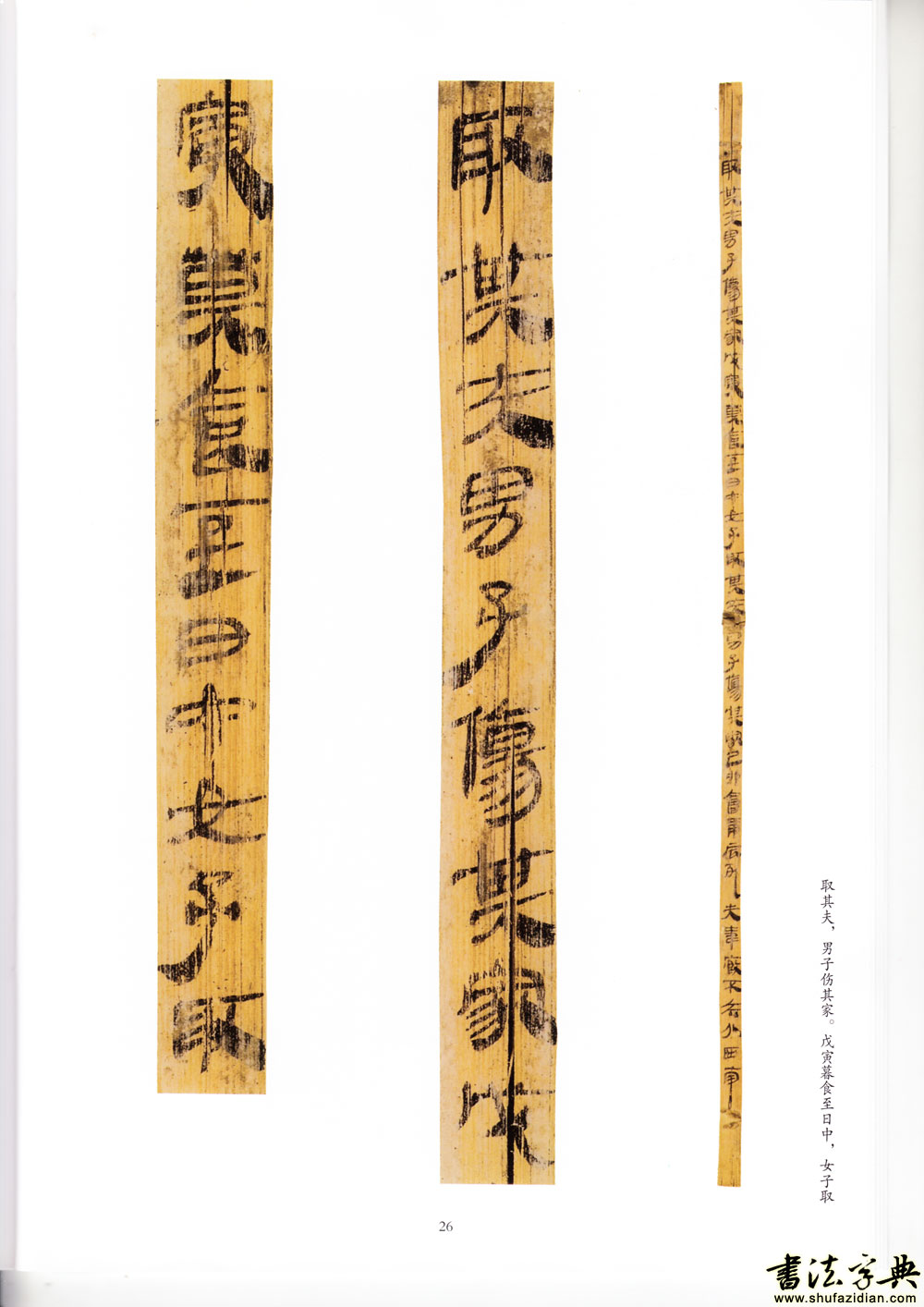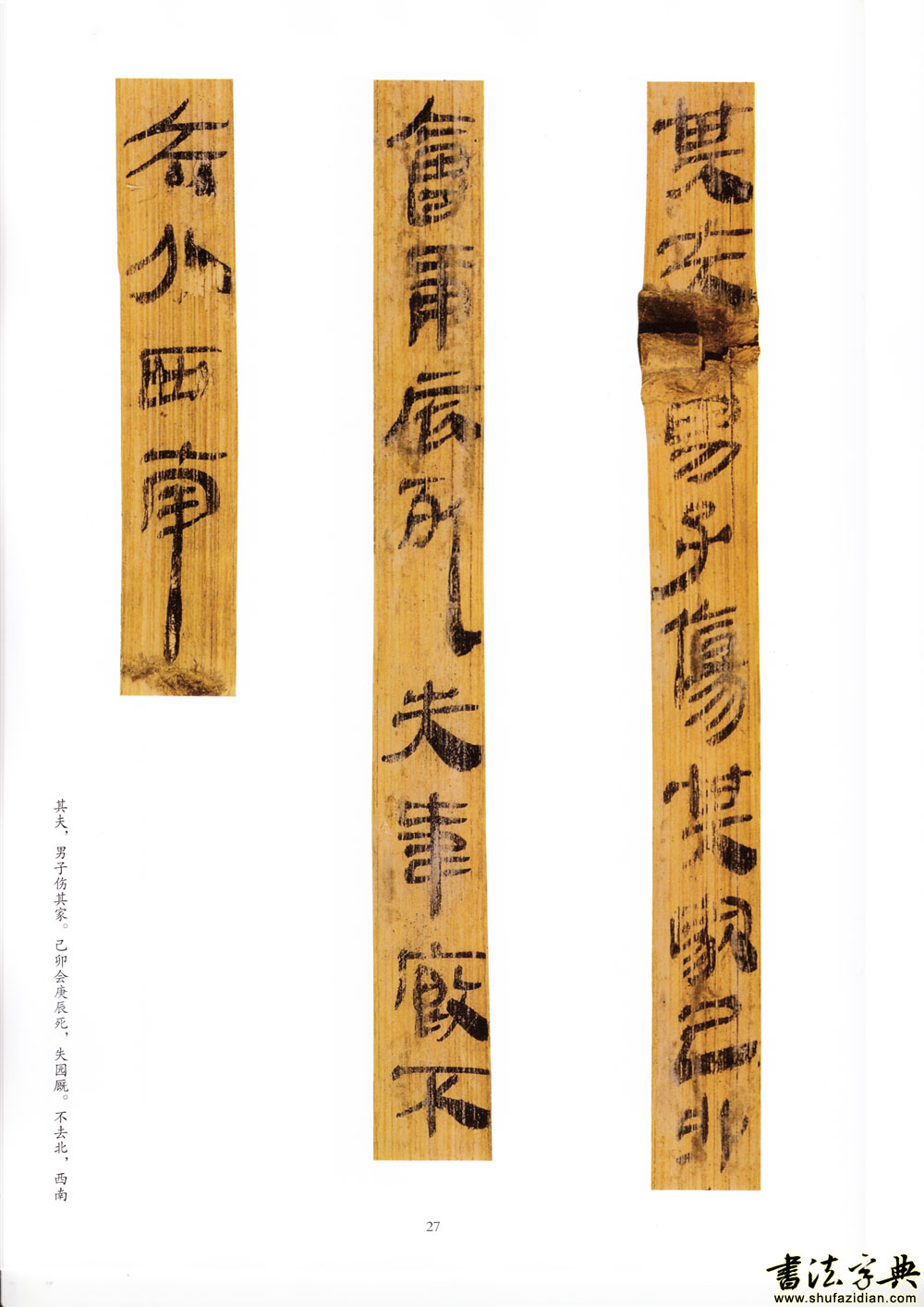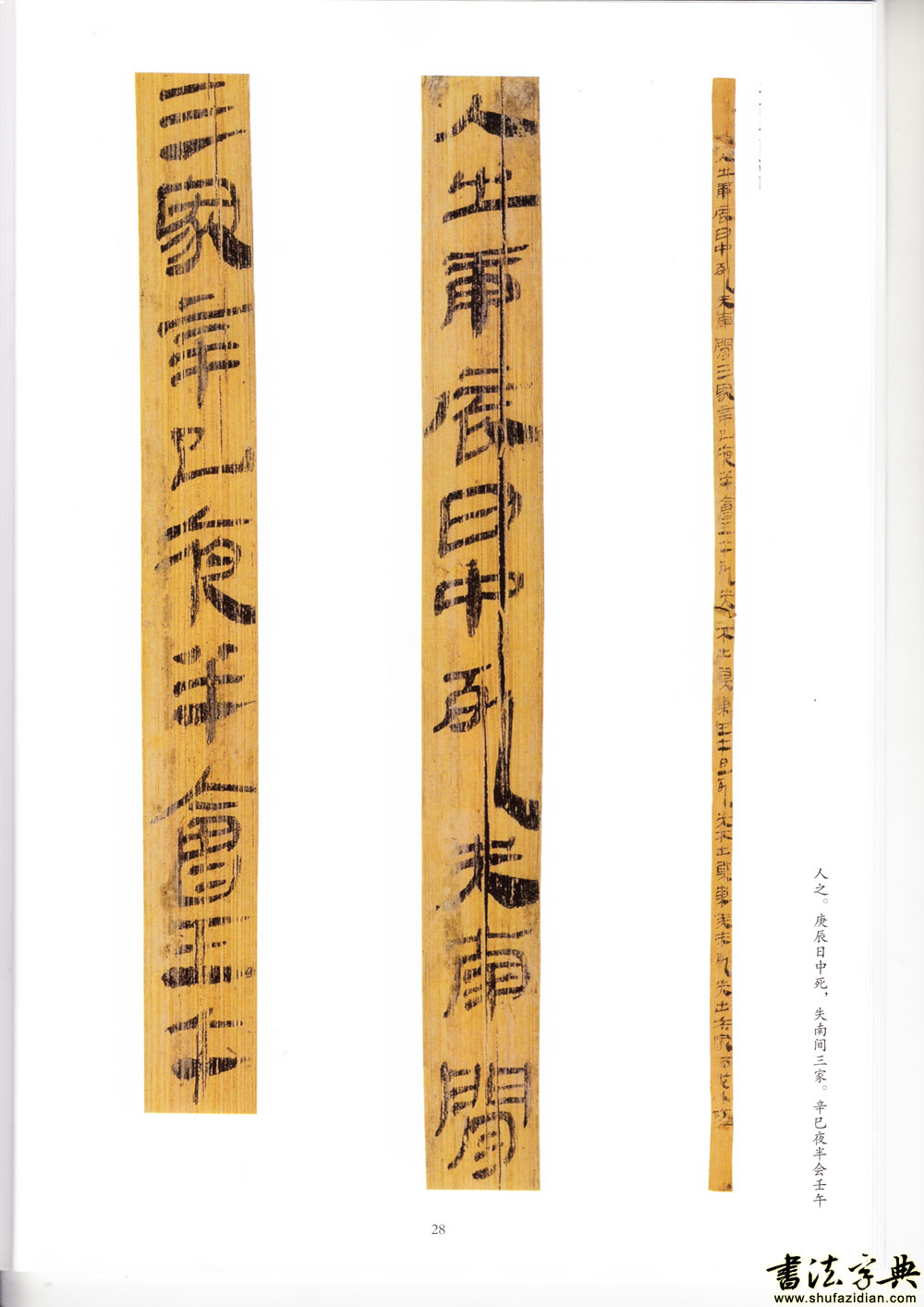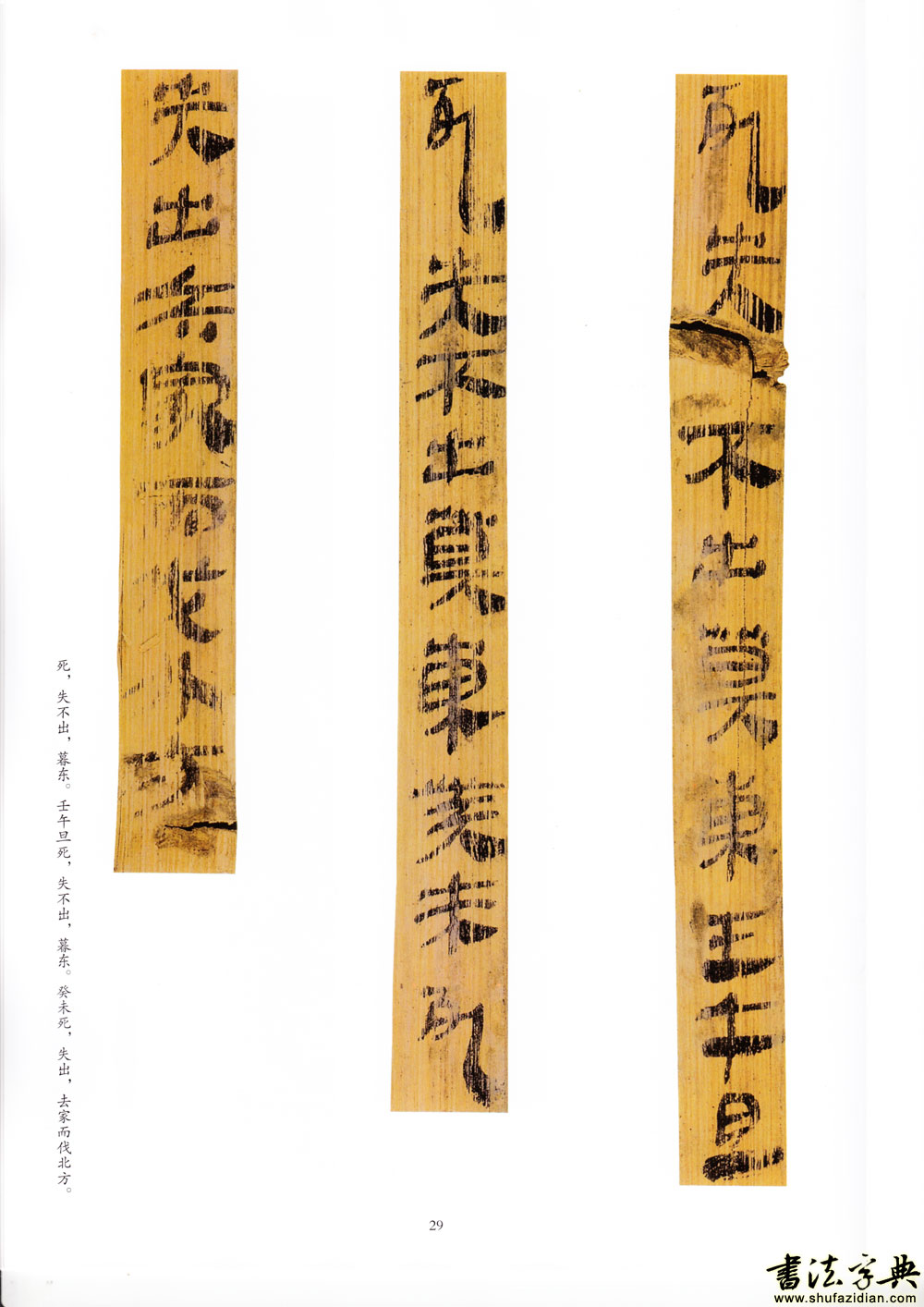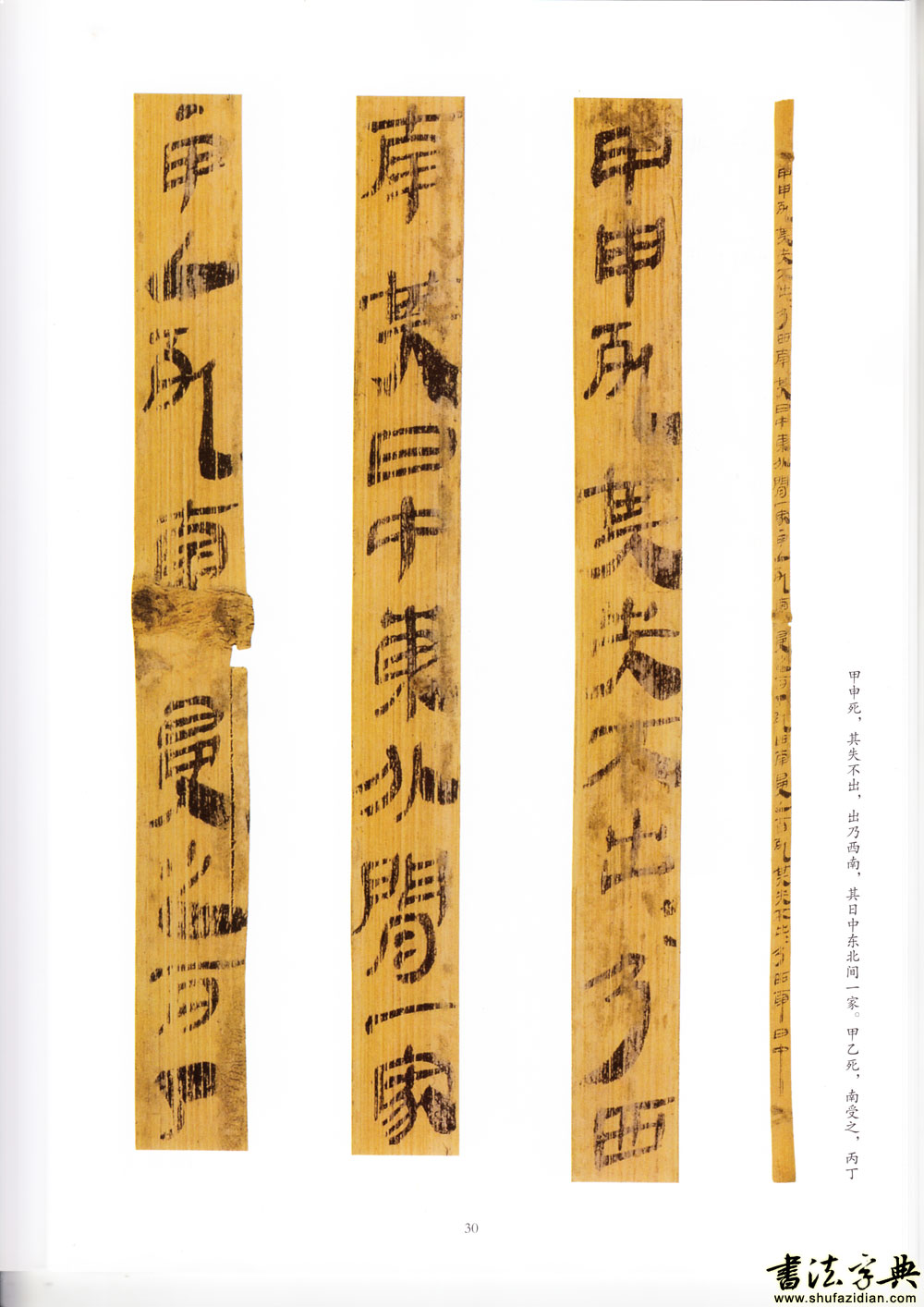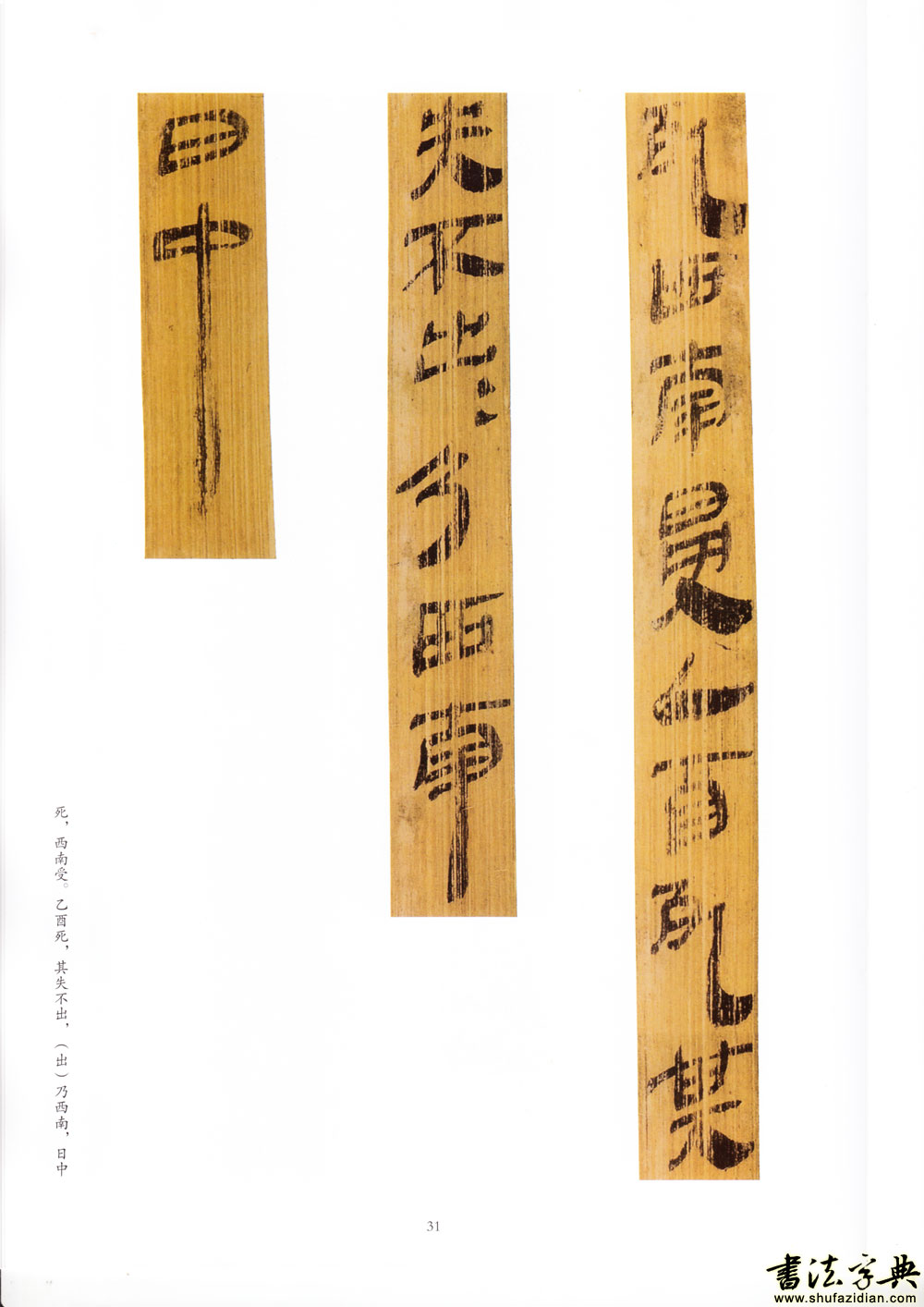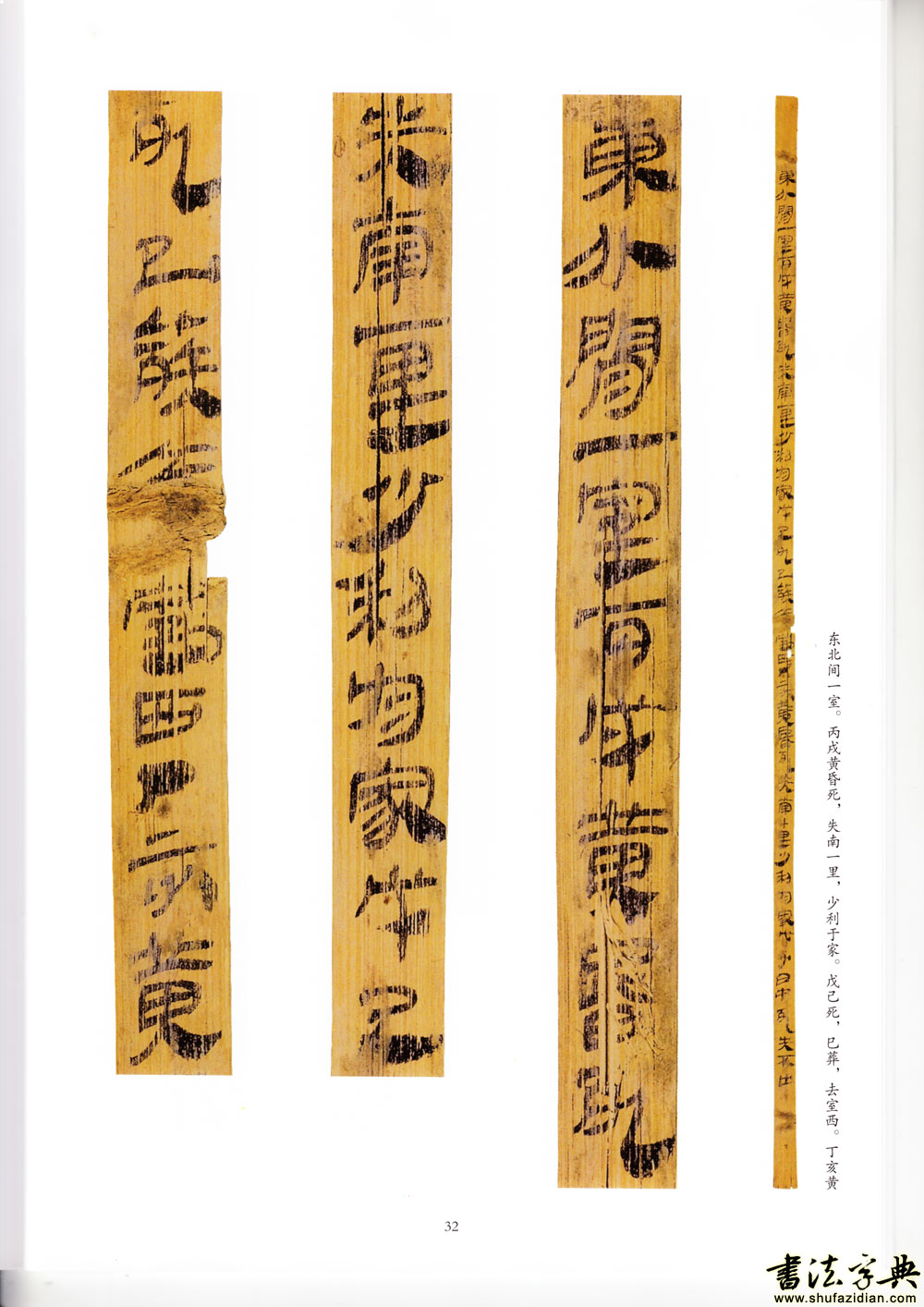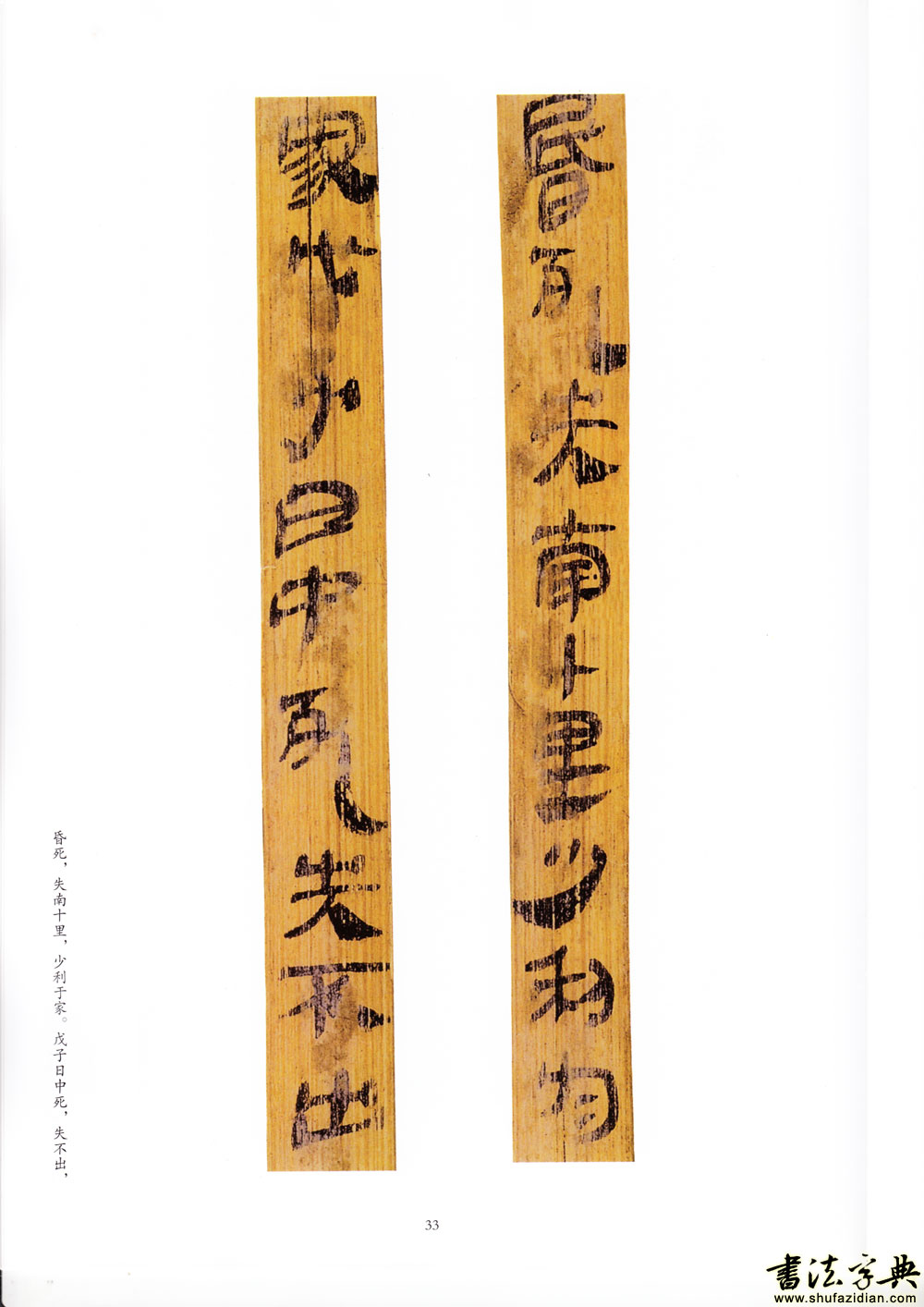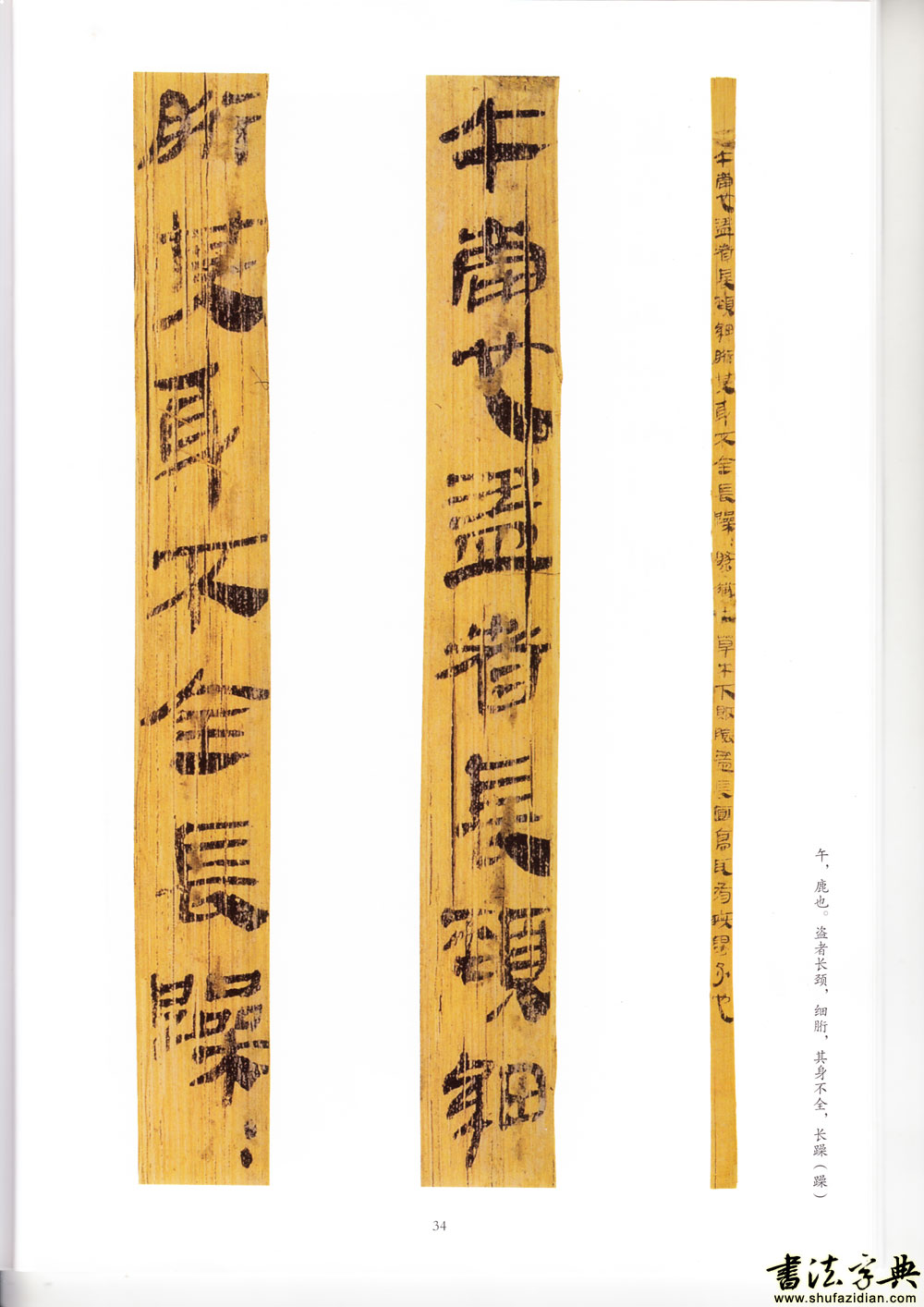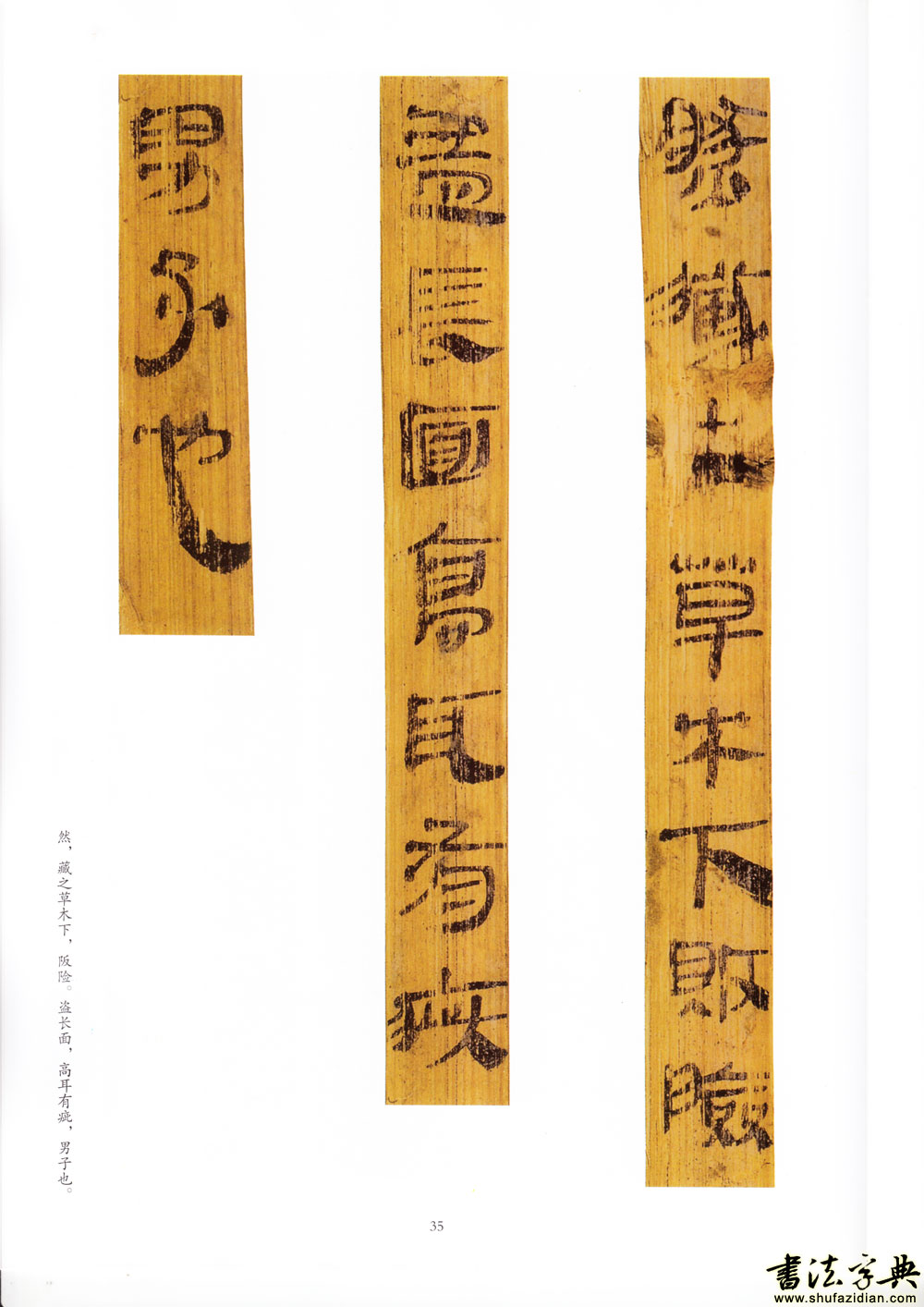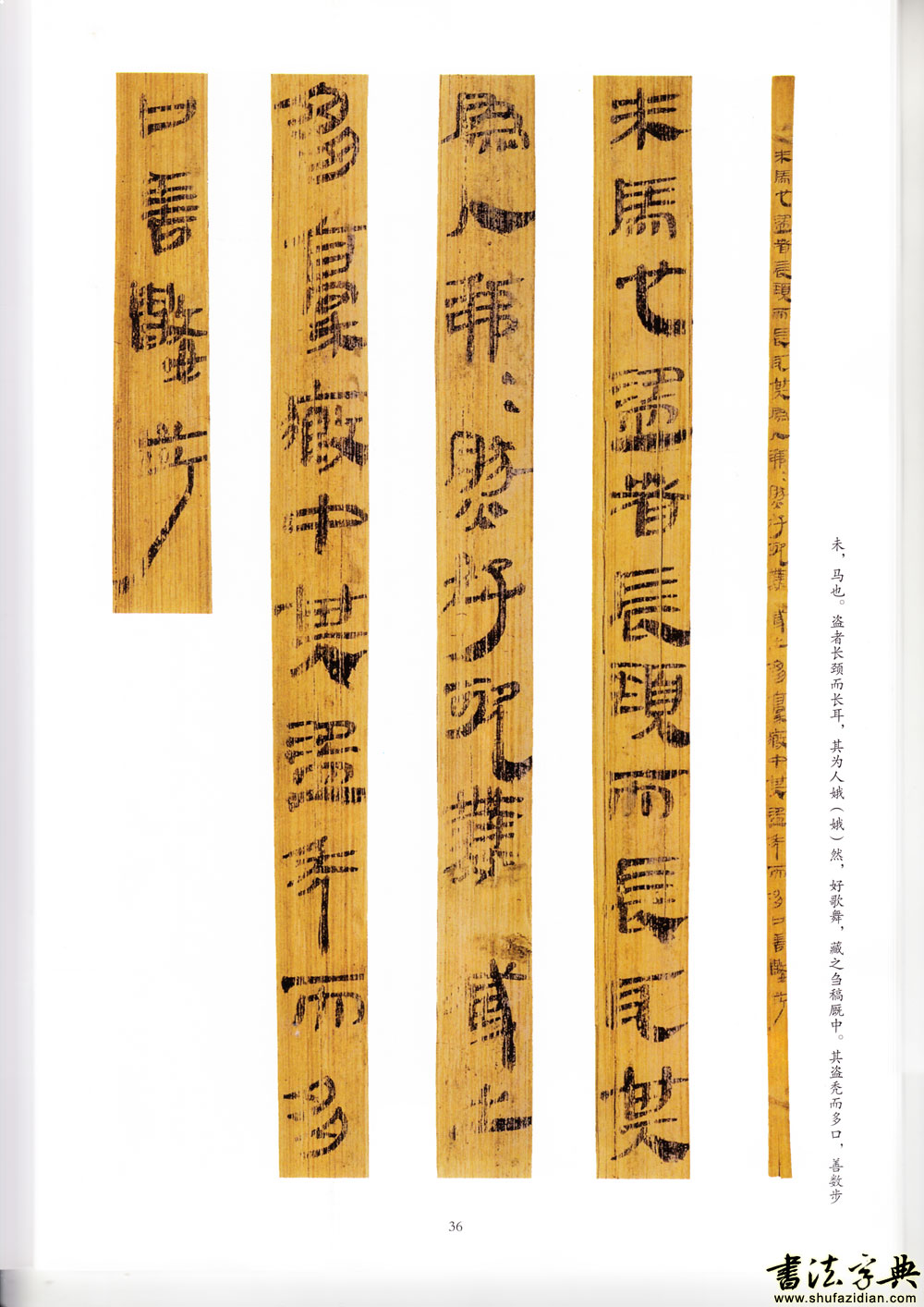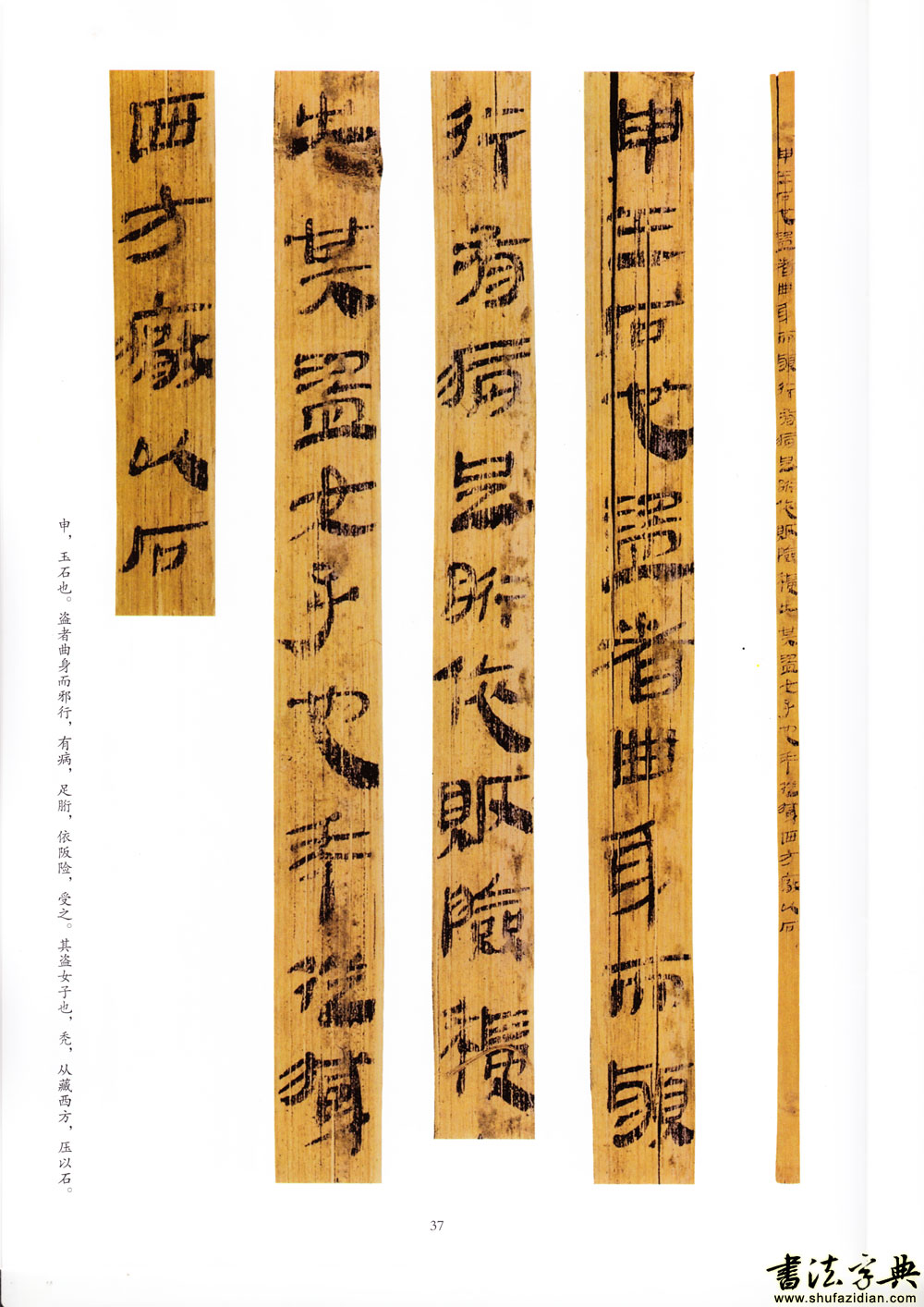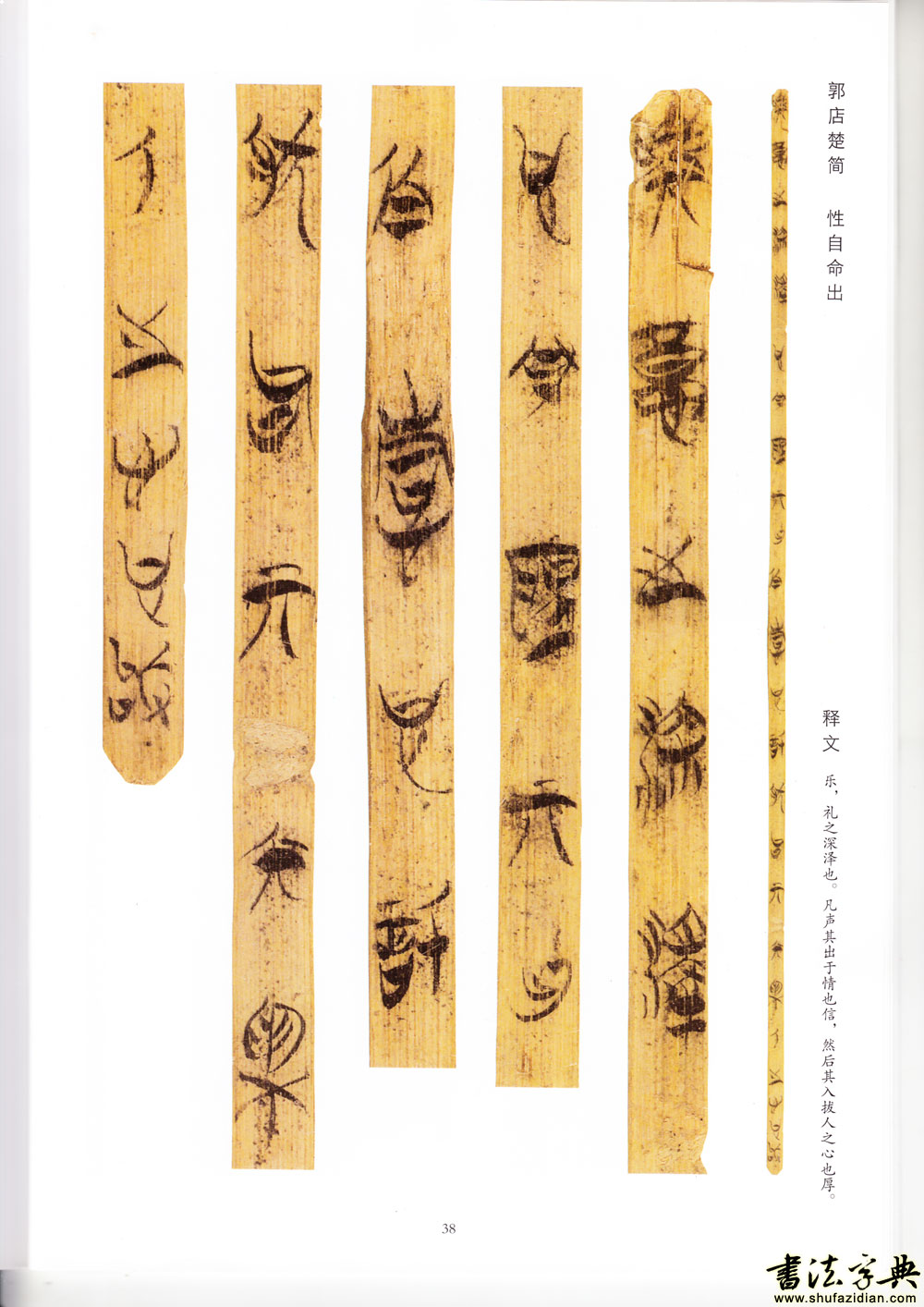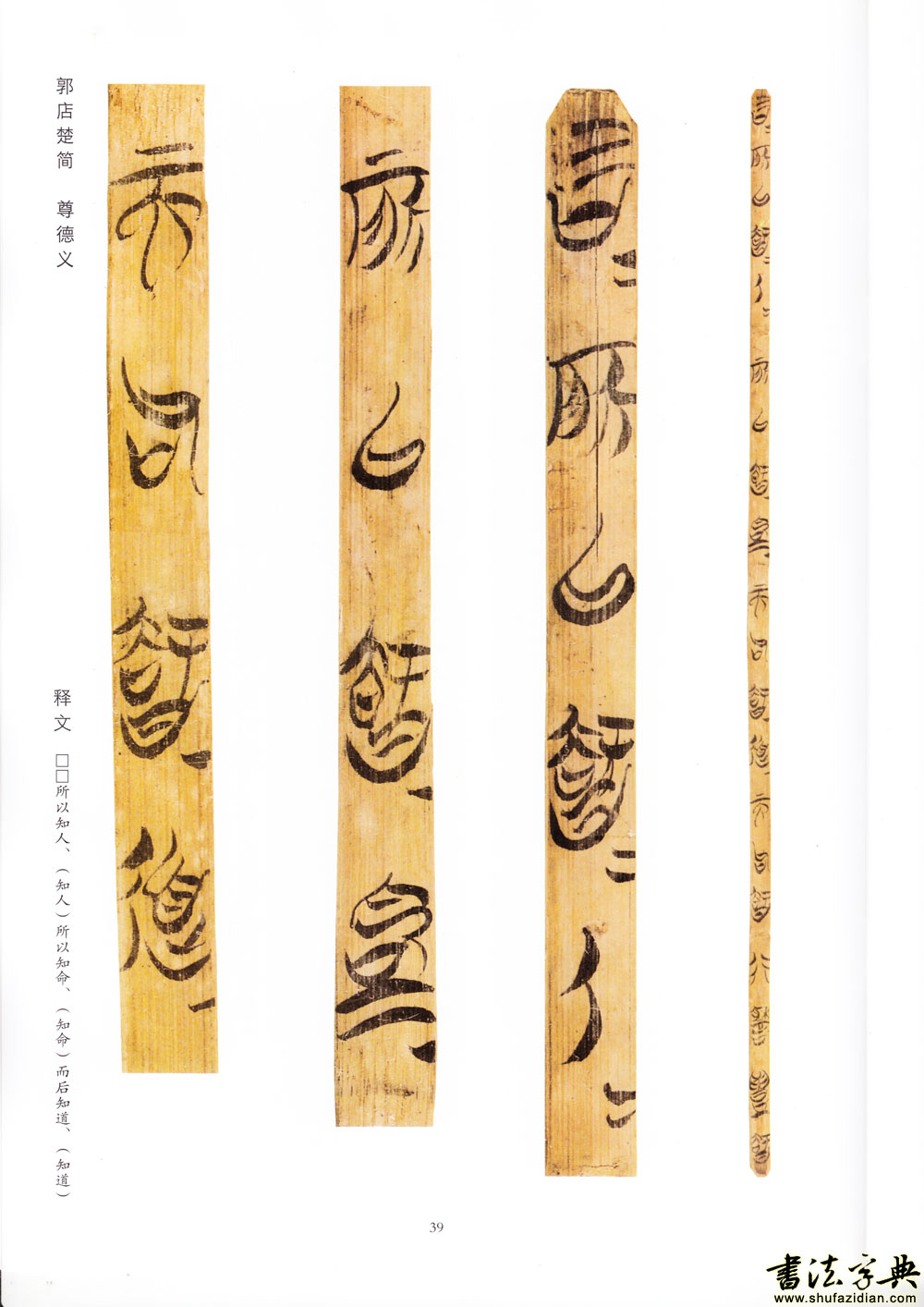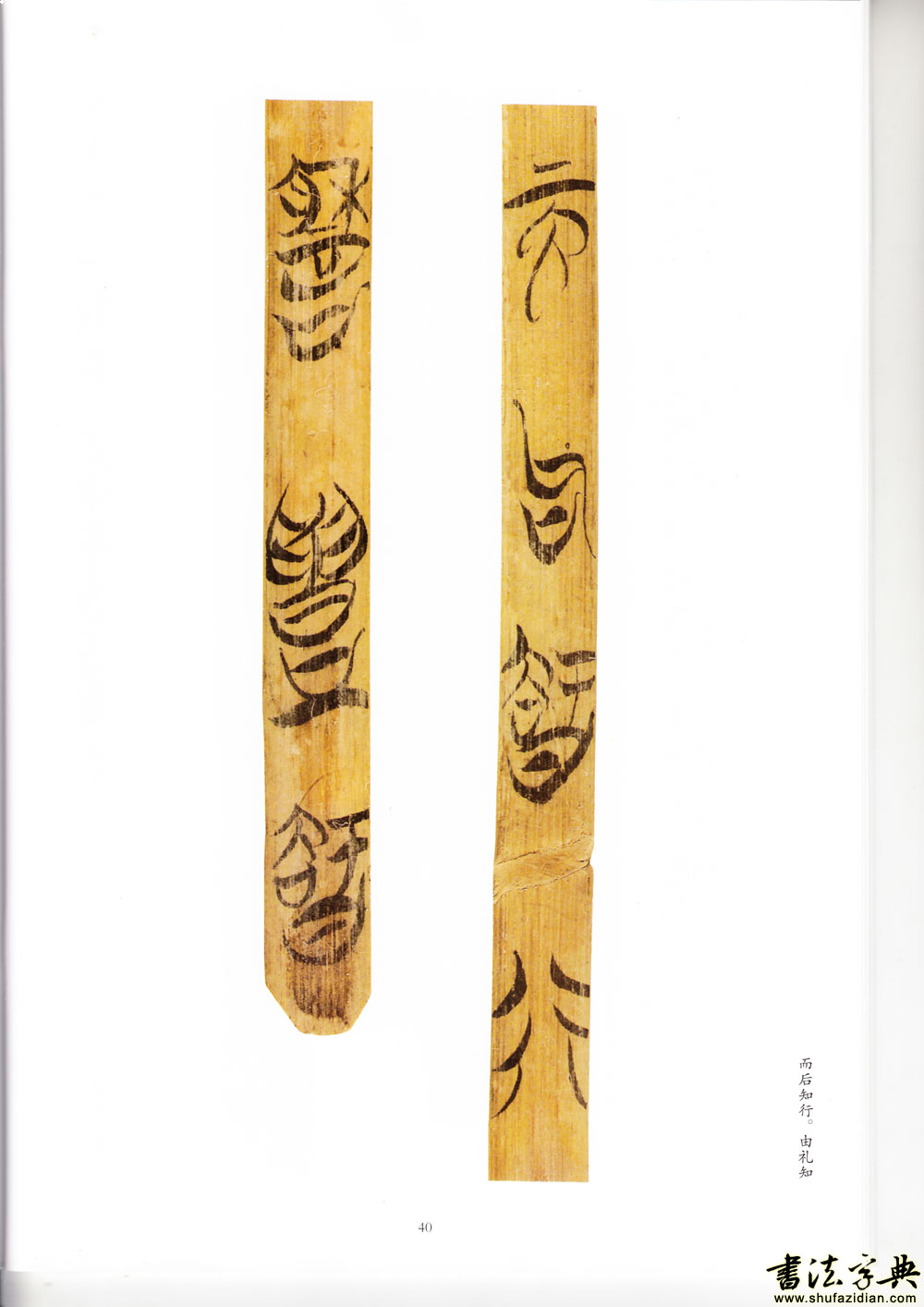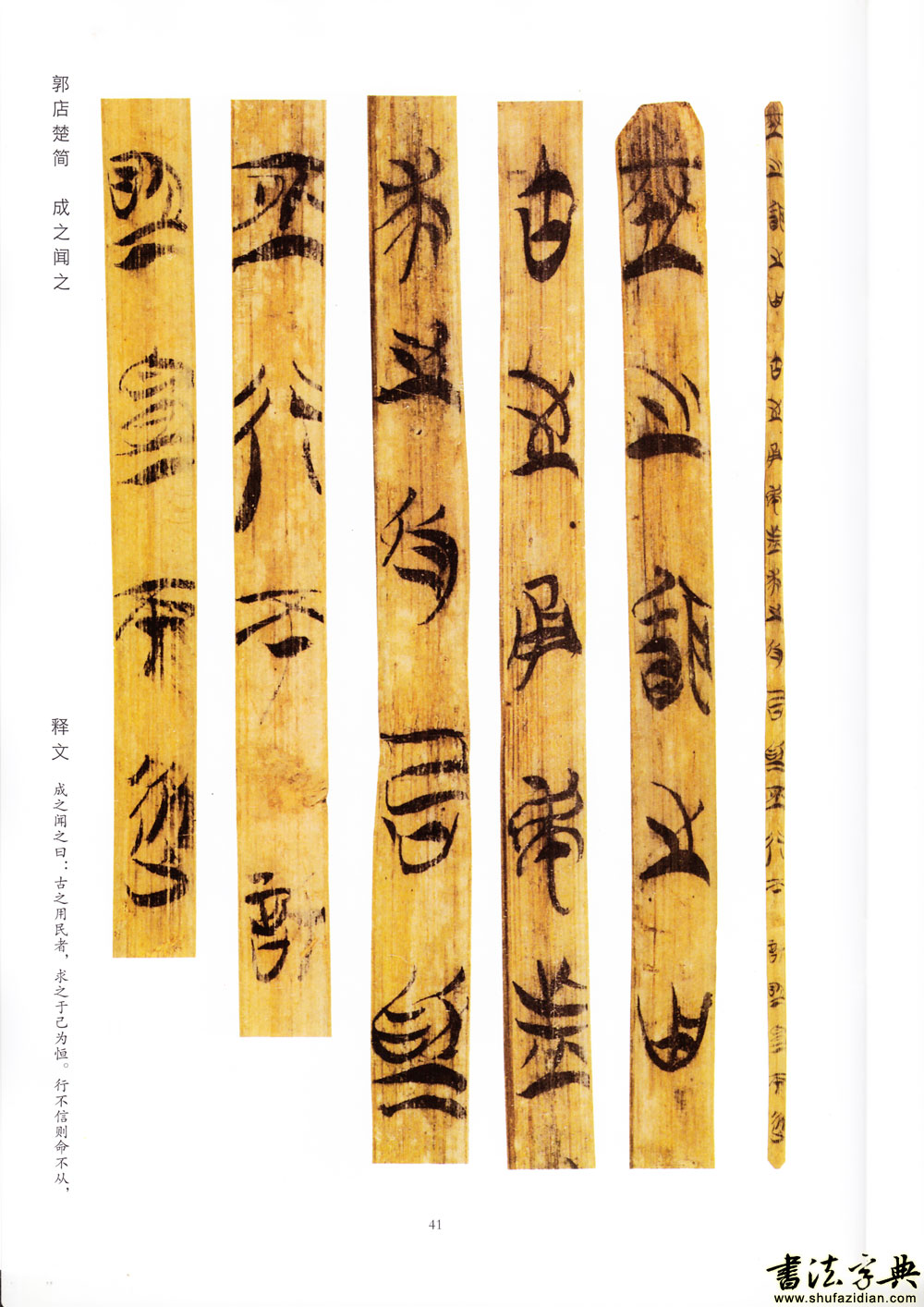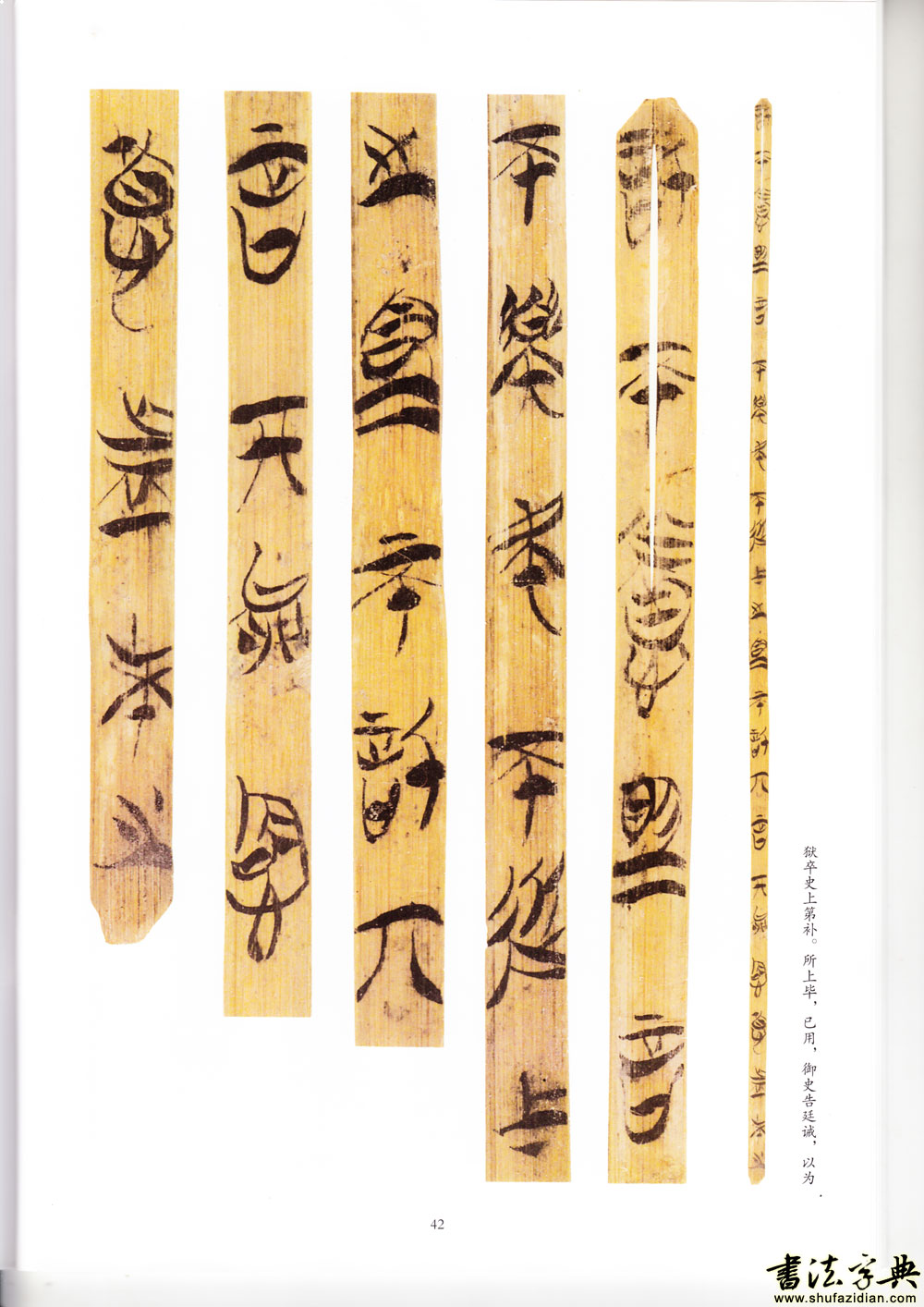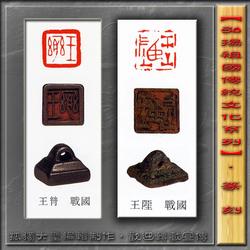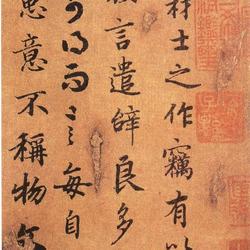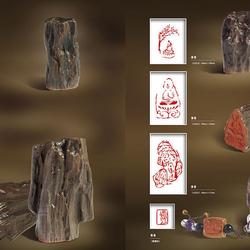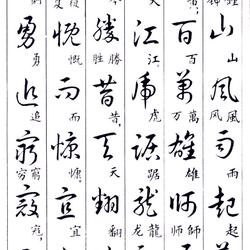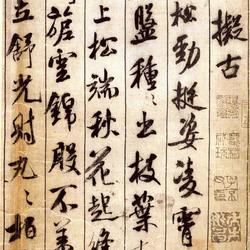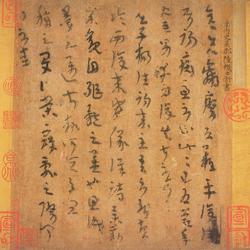An overview of Qin and Han bamboo slips
The so-called "Jianzi" is the collective name of "Jian" and "Jian", both of which are the names of writing materials in ancient my country before the invention of paper. Since they are both the names of writing materials, why are there differences in the names of "Jian" and "牍"?
first,It is caused by the differences in the properties of the materials used for writing. Generally speaking, the so-called "jian" refers to bamboo writing materials, which are made of bamboo tubes and cut into pieces. Therefore, the name "bamboo slips" first came from the merging of "bamboo slips" and "wooden slips".
Secondly, "There are also differences in shape between "jian" and "slips". Generally speaking, bamboo slips made of bamboo slips are relatively narrow, and most of them can only write one line of characters; while slips made of wood slips are relatively wide, and multiple lines of characters can be written. Therefore. , Bamboo slips and wooden slips are also divided in size and width in shape. However, the above distinction is not absolute. Sometimes bamboo slips are wider and can write two lines of characters; slips are also made of wood, which are called They are called "wooden slips". However, these are relatively rare special cases. Generally speaking, "jian" and "slips" mostly have the above two aspects of difference.
In addition to bamboo slips, wooden slips and wooden slips were also made of willow wood. This is recorded in the "Sikong Lv" of the Qin Dynasty; "Hanshu Lu Wenshu Biography" states that "Puliu was used as the official slip". According to the bamboo slips unearthed in the northwest region, the wood materials are mostly poplar, water willow, tamarisk and spruce. The external form of the bamboo slips is firstly manifested in the fact that the slips have different specifications, ranging from long to short. According to the unearthed bamboo slips of the Qin and Han Dynasties, the longest bamboo slips are three feet long; medium-length bamboo slips are generally two feet and four inches long during the Qin and Han Dynasties, which is about 56 centimeters today; short bamboo slips are mostly one foot long during the Qin and Han Dynasties. It is about 23 centimeters today. There are also eight-inch slips in the room, which are about 18 centimeters today. The bamboo slips used to write edicts were long bamboo slips. The slips used to write legal provisions are also relatively long, and calendars are also written on three-foot slips. The bamboo slips used to write scriptures are also relatively long.
The short bamboo slips are generally one foot long in the Qin and Han Dynasties, and some are as short as eight inches. For example, the bamboo slips for copying "The Analects of Confucius" are eight inches long; there are even longer six-inch bamboo slips; they are generally used for writing scripts and biographies. However, judging from the unearthed conditions, the one-foot-long briefs are extremely ordinary. This kind of brevity was mostly used to write general documents and letters. Over time, the habit of calling letters "chishu" was formed.
The content contained in the slips and slips is very rich. Generally speaking, there are imperial edicts and orders issued by the emperor, documents from the government at all levels, official documents and letters exchanged between different departments, units or institutions, and various documents from the government. There are various rosters and books, various legal provisions, various contracts, ID cards or passes of various forms and contents, medical prescriptions, calendar records, files kept by the government, property registrations, etc. The registration of burial objects contains transcripts of various ancient books, a chronology of major events, government notices, and even private letters.
As for the documents of various levels of government, there are various names in the slips, including documents belonging to the central government such as making books, edicts, and edicts; , Appreciation letter (documents used for recruitment, explanation and appeal), response letter (reply letter from subordinate to superior's inquiry), ultimatum (document mainly used for personnel-related appointment and removal, trial and election, etc.), love letter (Documents used to record matters related to legal trials), levy documents (in the nature of investigation reports), dispatch documents (which are different from the "dispatch books" that record the burial objects in tombs, and are mostly documents for appointing and dispatching low-level officials ), newspapers (with the nature of judgments), disease records (documents describing the health status of garrison soldiers), government records (documents specifically referring to a certain area); other books (documents used to distinguish the merits of right and wrong), official records Ningshu (referring to officials' applications and approval letters for family visits), Xingtingshu (referring to special documents with the nature of a pass in frontier areas), change books (documents regarding suggestions and opinions, etc.), etc., belong to local Documents between various levels of government.
Selected Ink Marks on Bamboo Slips of Qin and Han Dynasties (12)
